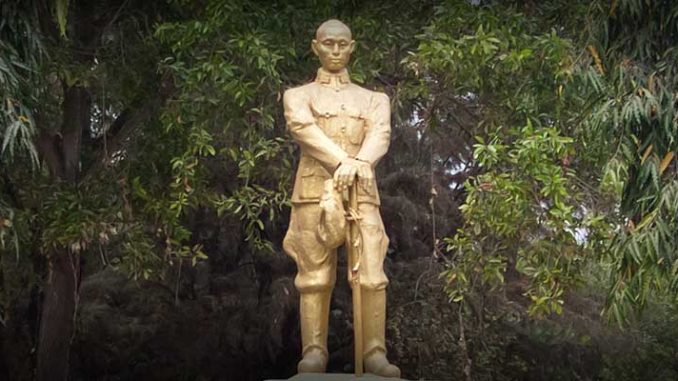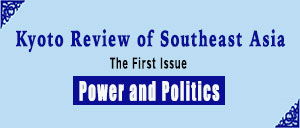
Aung San: The Locked Away Dream of Burmese Independence
Aung San—Fuuin Sareta Dokuritsu Biruma no Yume
Nemoto Kei
Tokyo / Iwanami Syoten / 1996
Myanmar’s Village Economy in Transition: Peasants’ Lives under the Market-Oriented Economy
Gendai Myanmaa no Nooson Keizai—Ikoo Keizaika no Noomin to Hi-Noomin
Takahashi Akio
Tokyo / University of Tokyo Press / 2000
Myanmar studies in Japan is changing. Since 1988, with the end of “isolated Burmese socialism,” the research environment has improved gradually as the Myanmar government has begun to admit some foreign researchers in anthropology, economics, history, agriculture, and so on. Thus some good works in those fields have appeared in the 1990s. But research in politics is not so easy. One reason is that the Myanmar government is particularly sensitive to politics and doesn’t permit it. Consequently, there are few books published recently in Japan which analyze Myanmar’s politics academically.
In this review, therefore, I will discuss two good books in modern history and rural economics, which will let us speculate about what is going on in Myanmar politics.
Nemoto Kei is Associate Professor at the Institute for the Study of Languages and Cultures of Asia and Africa, Tokyo University of Foreign Studies. Takahashi Akio is Associate Professor at the Institute of Oriental Culture, Department of South Asian Studies, University of Tokyo. They were both born in 1957 and both speak and read Burmese fluently. They study Myanmar’s history and rural economy, respectively, using extensive Burmese sources and fieldwork. For Myanmar studies in Japanese, they and their works are very important.
Nemoto’s Aung San describes the life of General Aung Sang, the political environment in which he lived, and the relationship between his ideas and those of his daughter, Aung San Suu Kyi. A national hero in Burma, Aung San was born in 1915 and from World WarⅡuntil his death in 1947, exercised leadership in the anti-imperialist and anti-fascist movements and in negotiations with the British government for Burma’s independence. He was assassinated just one year before independence.
The author puts emphasis on Aung San’s “dream,” that is, his plan for the independent Burmese state, by analyzing his speeches and extracting seven points: 1) “true democracy” for realizing “the greatest happiness of the greatest number”; 2) a republic based on popular sovereignty; 3) capitalism as an intermediate stage; 4) national defense as the state’s obligation; 5) federalism and the right of people who have a “national community” to become independent; 6) the present struggle as “revolution”; and 7) solidarity of the Left in AFPFL (Anti-Fascist People’s Freedom League). This dream didn’t come true in independent Burma. Democracy was distorted by corruption and violence. The economy lapsed into stagnation. The governability of the state was felled by crisis. At last, the army led by General Ne Win took over the state in 1962, and Aung San’s dream (both his idea and the constitution) was locked away.
According to the author, current politics in Myanmar is the renewed struggle to realize Aung San’s dream. On the one side, the military government wants to keep it out of reach, while on the other, Aung San Suu Kyi and the National League for Democracy (NLD) want to unlock it and make it real. The author thinks that Aung San’s dream is alive in Aung San Suu Kyi’s ideas and her persistence in realizing them. But this argument is too simple. Aung San Suu Kyi’s life has been much different from Aung San’s. Unlike her father, she lived abroad—in such countries as India, Britain, Japan, and the United States—from the time she was 15 years old, in 1960, until her return to Burma in 1988. In spite of this, her commitment is similar to her father’s. Why? It would have been better if the author had analyzed this question.
Takahashi’s Gendai Myanmaa no Nooson Keizai (Myanmar’s village economy in transition) demonstrates how the state’s agricultural policies and villagers’ lives are changing under the transition from socialism to a market-oriented economy. There are few researchers who, like Takahashi, have studied Myanmar’s rural economy through fieldwork for over ten years. His analysis is so wide that the information is of value to other fields, but here I will focus on changes in agricultural policies. According to the author, there were three main policies in the period of Burmese socialism (1962-1988): 1) state ownership of land; 2) compulsory procurement; and 3) programming agricultural output.
How did these policies change? The author’s answer is simple. They didn’t. Land theoretically and actually still belongs to the state. Peasants merely have the right to cultivate, which they must renew each year. They are also still required to supply some agricultural products to the government at lower than market prices, though quotas and prices have improved since 1988. Moreover, they must still grow the crops specified by the government. Therefore, Myanmar’s agricultural policies at present are built on the foundations of the socialist period. Nevertheless, peasants’ lives are changing little by little. For example, since 1988, the author has sometimes found illegal land transactions, such as sales, transfer, division, and pawning.
How can we think about Myanmar’s politics through these two books? I would call attention to three points. The first is that we cannot analyze Myanmar politics sufficiently without understanding the period of British colonial rule and Japanese military government rule. As Nemoto says, present Myanmar politics is still the struggle for Aung San’s “dream.” This means that the Myanmar state is in large part conditioned by the heritage of British colonial rule and Japanese military government rule. The second is that we should not overestimate the impact of political changes since 1988. As Takahashi says, agricultural policies have not changed fundamentally. This means that the process of decision-making has not changed either. The point is that we can find the importance and continuity of Burmese socialism reflected in both books. However, there are still few studies of Myanmar politics from the 1962 coup to 1988. Thus one of the most important and essential questions in today’s political studies of Myanmar is “what was Burmese socialism?”
Reviewed by Nakanishi Yoshihiro
The author is a student of Myanmar politics at Kyoto University’s Graduate School of Asian and African Area Studies.

